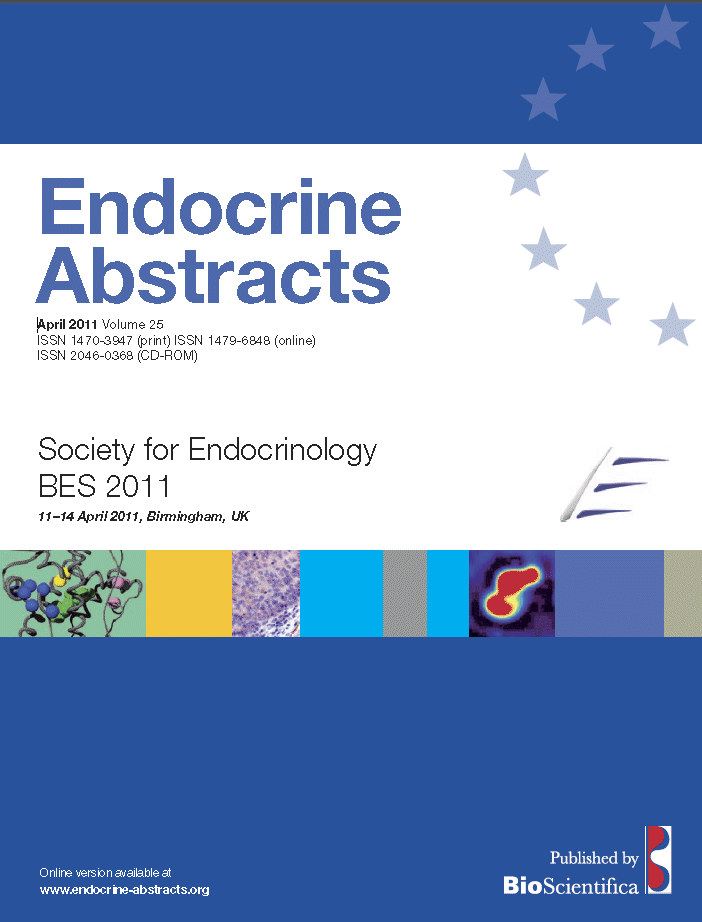Oral Communications
Bone and diabetes
ea0025oc4.1 | Bone and diabetes | SFEBES2011
A mouse with an ENU-induced mutation (Tyr209Asn) in the natriuretic peptide receptor 3 (Npr3) develops autosomal recessive kyphosis
Esapa Christopher , Head Rosie , Thomas Gethin , Brown Matthew , Croucher Peter , Cox Roger , Brown Steve , Thakker Rajesh
ea0025oc4.2 | Bone and diabetes | SFEBES2011
Is Mepe a novel regulator of growth plate mineralisation?
Staines Katherine , MacRae Vicky , Farquharson Colin
ea0025oc4.3 | Bone and diabetes | SFEBES2011
Rapid bone turnover responses to increased hypothalamic–pituitary–thyroid-axis activity are mediated by thyroid hormones
Gogakos Apostolos , Murphy Elaine , Bassett Duncan , Williams Graham
ea0025oc4.4 | Bone and diabetes | SFEBES2011
CB1 receptor mediates the effects of glucocorticoids on AMPK activity in the hypothalamus but not in adipose tissues
Scerif Miski , Kola Blerina , Fekete Csaba , Grossman Ashley B , Korbonits Marta
ea0025oc4.5 | Bone and diabetes | SFEBES2011
Alterations to hypothalamic 5-HT and DA turnover in offspring induced by maternal exposure to a high caloric diet throughout lactation
Wright Thomas , Voigt Peter , Langley-Evans Simon
ea0025oc4.6 | Bone and diabetes | SFEBES2011
Dual effect of arachidonic acid on peroxisome proliferator-activated receptor γ (PPARγ)-dependent action in 3T3-L1 adipocytes
Nikolopoulou Evanthia , Parker Malcolm , Christian Mark
ea0025oc4.7 | Bone and diabetes | SFEBES2011
Co-administration of the gut hormones PYY and GLP-1 to human volunteers reduces food intake and brain activation in appetite centres
De Silva Akila , Salem Victoria , Long Christopher J , Makwana Aidan , Newbould Rexford D , Rabiner Eugenii A , Tavare Aniket N , Ghatei Mohammed A , Bloom Stephen R , Matthews Paul M , Beaver John D , Dhillo Waljit S
ea0025oc4.8 | Bone and diabetes | SFEBES2011
Hyperghrelinaemia, hyperphagia, food hoarding and reduced adiposity in an imprinting centre deletion mouse model of Prader–Willi syndrome
Wells Timothy , Relkovic Dinko , Furby Hannah , Guschina Irina , Nishimura Sachiko , Resnick James , Isles Anthony




